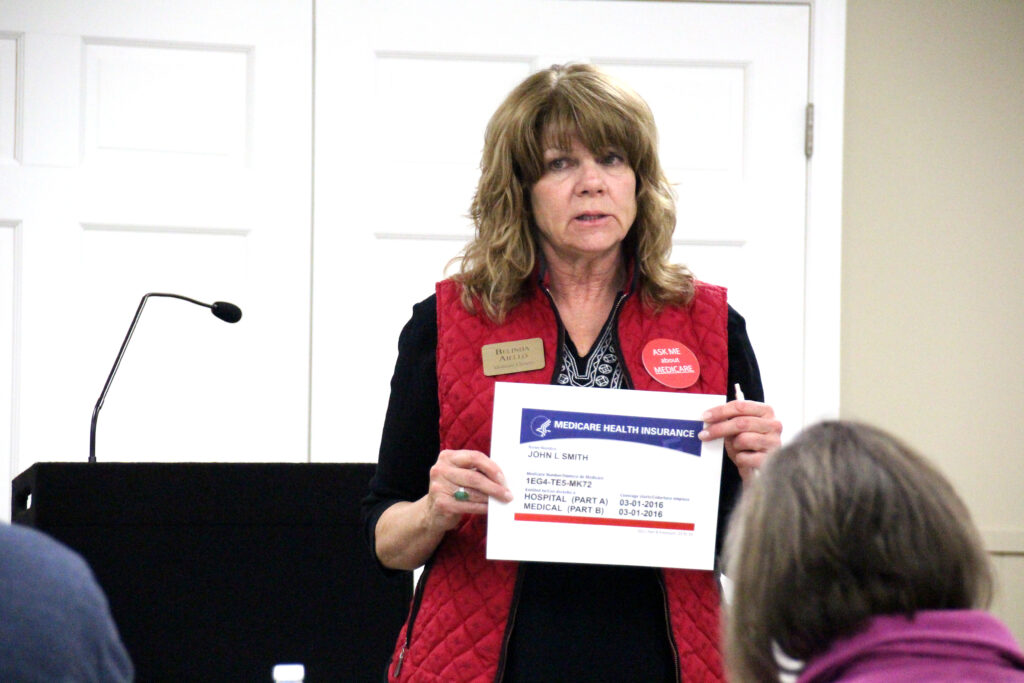
By Dean Vaglia
Leader Staff Writer
Americans 65 years and older and have social security are eligible for Medicare, but it can be difficult trying to navigate the program and the various ways to approach it.
Luckily for those unsure of how to proceed with Medicare, Belinda Aiello of the Medicare Choices Aiello Insurance Agency hosted a “Medicare Made Easy” seminar at the Oxford Parks and Recreation Community Room on Wednesday, Feb. 16.
Medicare is divided into several parts, the main ones of concern being A, B, C and D. A and B are the core of Medicare and cover the bulk of hospital services; Part A covers formally admitted inpatient hospital services, skilled nursing services after three days in a hospital and hospice services while Part B covers outpatient services and charges, care provider office visits and many drugs administered by hospital staff.
The cost of Medicare Parts A and B in 2022 is a $170.10 monthly premium, typically taken out of social security. This premium only covers Part B while Part A is covered by Medicare taxes paid while working, covering about 80% of medical expenses.
“However, if you do not pick up a supplement to cover the other 20% plus a [prescription] drug plan … there are some additional costs,” Aiello said.
A Medicare card alone can leave seniors open to paying the $1,500 Part A deductible, so additionally paying roughly $130 and $16 per month for a supplement and drug plan is a strongly-advised move; the average monthly cost for all for a 65-year-old male is just under $316.
A Medicare Advantage Plan is a plan offered by a private insurer approved by Medicare that combines Parts A, B and D. The insurer takes on the responsibility of paying for medical costs with no monthly premium, but seniors are still responsible for copays and coinsurance for anything not covered by Medicare; the standard monthly cost is $170.10. The plan operates with one card, a maximum annual out of pocket cost, can be changed every year and can cover various other aspects of healthcare besides hospital services.
“Some offer dental cleanings,” Aiello said. “Some offer eyeglass coverage [and] hearing aids. Most of them provide you with a hearing exam every year, an eye exam every year. Some provide you with over-the-counter products.”
While a Medicare card and supplement are open to any doctor that takes Medicare, Advantage Plans can only be used to doctors within the insurer’s network. Advantage Plans will cover up to 20 days of skilled nursing, which Aiello says is “good for most people,” but leaves the senior having to pay about $200 a day from days 21-100 of in-hospital care; Medicare with a supplement covers up to 100 days.
If someone with a Medicare Advantage plan wants to cover some of the largest copays like hospital stays, skilled nursing and cancer treatments, they can take on a Hospital Indemnity Plan. Once a hospital bill is received it can be sent to the indemnity provider for reimbursement.
Hospital Indemnity Plans can include a cancer rider, which can reimburse members anywhere from $6,700 to $10,000 to cover treatment copays. The monthly cost for Medicare Advantage with a cancer rider Hospital Indemnity Plan is about $240.
Income can also affect the cost of Medicare. An income-related monthly adjusted amount (IRMAA) is a premium placed on high income earners and starts kicking in at $91,000 for individuals and $182,000 for joint-filers. Individuals who have less than $15,510 and married couples with less than $30,950 in assets qualify for “Extra Help,” which reduces the cost of drugs to about $10 and under.
There is a 10% late enrollment penalty for every year an eligible senior does not sign up for Medicare; someone who signs up for Medicare at 67 will have to pay an extra 10% per month until they turn 69. Aiello recommends people sign up about two months before turning 65, though personal situations can dictate applying earlier or later.

Leave a Reply